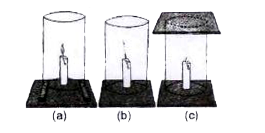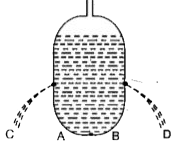What does hill experiment prove ?
Step-by-Step Solution:
1. Introduction to the Hill Experiment: The Hill experiment was conducted by scientist Robert Hill in 1937. It aimed to investigate the process of photosynthesis, specifically focusing on the role of chloroplasts in oxygen production.
2. Extraction of Chloroplasts: In the experiment, chloroplasts were extracted from plant cells. Chloroplasts are the organelles responsible for photosynthesis in plants.
3. In Vitro Conditions: The extracted chloroplasts were placed in vitro (outside the living organism) and exposed to blue light. This light is essential for the photosynthetic process as it provides the energy required for the reactions to occur.
4. Oxygen Production: Hill concluded that oxygen is produced during photosynthesis, specifically from the splitting of water (H2O). This means that water is a source of oxygen in the photosynthetic process.
5. Use of Hill's Reagent: The experiment also involved the use of a chemical agent known as Hill's reagent, which is created by mixing iron with the chloroplasts. This reagent plays a crucial role in facilitating the chemical reactions that occur during photosynthesis.
6. Chemical Potential and Reaction: Hill's reagent helps in applying a chemical potential, which is necessary for the reactions to occur in the presence of light. This indicates that light is a driving force for the photosynthetic reactions.
7. Conclusion of the Experiment: Ultimately, the Hill experiment demonstrated that chloroplasts can produce oxygen when provided with water and light, confirming that water is the source of oxygen released during photosynthesis.
Summary of Findings:
- The Hill experiment proved that chloroplasts can produce oxygen from water in the presence of light.
- It highlighted the importance of chloroplasts in photosynthesis and established the role of water as the source of oxygen.
- The Hill experiment proved that chloroplasts can produce oxygen from water in the presence of light.
- It highlighted the importance of chloroplasts in photosynthesis and established the role of water as the source of oxygen.
Topper's Solved these Questions
- BOOK - MODERN PUBLICATIONCHAPTER - PHOTOSYNTHESIS IN HIGHER PLANTSEXERCISE - COMPETITION FILE (OBJECTIVE TYPE QUESTIONS )( G . ADDITIONAL MULTIPLE CHOICE QUESTIONS ):15videos
PHOTOSYNTHESIS IN HIGHER PLANTS
- BOOK - MODERN PUBLICATIONCHAPTER - NEURAL CONTROL AND COORDINATIONEXERCISE - Chapter Practice Test11videos
NEURAL CONTROL AND COORDINATION
- BOOK - MODERN PUBLICATIONCHAPTER - PLANT GROWTH AND DEVELOPMENTEXERCISE - CASE BASED SHORT ANSWER TYPE QUESTIONS1videos
PLANT GROWTH AND DEVELOPMENT
Similar Questions
Knowledge Check
- Question 1 - Select One
What does this experiment show?
 ACandle can burn in a glass chimney.BCandle cannot burn in a glass chimney.CWood is essential for combustion.DOxygen is essential for combustion.
ACandle can burn in a glass chimney.BCandle cannot burn in a glass chimney.CWood is essential for combustion.DOxygen is essential for combustion. - Question 2 - Select One
Swan neck flask experiment proved :
AbiogenesisBabiogenesisCspecial creationDboth (1) and (2) - Question 3 - Select One
Whose experiments proved that the speed of light was always the same ?
AJames Clark MaxwellBMichelson and MerleyCMiller and StanleyDWerner Heisenberg
What does the experience of European countries give us?
View Solution(a) Why does helium have zero valecy?
(b) Name the secientist and his experiment to prove that nucleus of an atom is positively charged.View Solution(a) What is Central dogma? Who proposed it?
(b) Describe Meselson and Stahl's experiment to prove that the DNA replication is tsemi-conservative.View SolutionWhose experiment proved that the speed of light was always the same -
View SolutionA bar magnet is placed inside a uniform magnetic field, What does in experience?
View Solution


